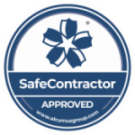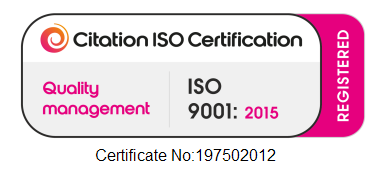Are my meters MID (billing approved) rated?
A very quick way of checking is if they were installed before 2014 then they certainly aren’t
as that’s when the standard was brought in. If they were installed after that date then a
quick Google search with the make and model should help. Normally if a meter is MID rated
then it’s a big selling point and as such very near the top of the marketing blurb.
Are MID (Billing approved) meters a legal requirement?
The short answer is no, however, If the landlord or property managing agent charges the
tenant for energy usage then yes, it is a legal requirement.
How many meters should I install in the premises?
There is no simple answer to this question. There should be a minimum of 90% of total
energy usage including all power and heating or cooling usage monitored. This is detailed
further along with a whole host of interesting and not so interesting information in Part L
Conservation of Fuel and Power, Volume 2 on page 48.
How do you monitor heating/cooling?
If there’s a wet system then there needs to be temperature sensors monitoring the
difference in the flow/return and a flow rate sensor along with a local data logger. If heating
and cooling are dealt with HVAC then usage would be monitored by either a direct wired or
CT MID meter.
Can energy usage be split into floors or areas?
Absolutely, in commercial space, there is typically a natural separation of tenants and
landlords and a further separation of floors or areas of the building. This includes power
and heating or cooling energy usage.
Should the meters in my building be remotely monitored?
Yes, in any building with a floor area of greater than 1000m2. This is detailed further in the
CIBSE guide TM39. The benefits are significant for remote monitoring. It allows speedy
accurate billing without requiring manual readings to be input, sent off, checked, authorised
and then finally paid. This has saved one of our larger clients £1.5 million in liability as the
energy usage is invoiced 1 month quicker!
Does this require additional cabling?
There needs to be a Beldon cable installed from the data logger for the building – usually
located in a building manager’s or security office – to all of the meters on the system.
Depending on the quantity of meters this may require 2 or more Beldon cables as there’s a
limit to the number of meters monitored on one cable. The data logger would also require a
network connection. Your IT department may be required to alter the permissions for data
transmission.
Is this a costly box ticking exercise?
Well, it can be costly but certainly not a box-ticking exercise! Once all the supplies are
monitored it is then possible to analyse the data to identify any anomalies in usage and
then put in place energy-saving measures. In a building in London, there was an energy
spike in the landlord’s lights every dinner time. With a bit of investigation, it turned out
one of the office staff was training for climbing Kilimanjaro and was setting off all the
fittings on the emergency stairwell while he was training! While this is a rather nice
wholesome example of what can be identified the energy savings engineered off the
back of good quality monitoring information can be significant and a cost-saving side
product of a legal requirement. Once base usage is set anything away from the norm can
be easily looked into.
What is the difference between a CT Meter and a direct wired meter?
Direct wired meters have the monitored load connected through them whereas with CT’s
are a type of instrument transformer. The monitored loads pass through the CT with the
meter calculating the usage from the size of the CT and the output current.
Is a CT or direct wired meter better?
Both comply and provide accurate information. However, the CT meters have to have the
correct components selected. The size of the supply is very specific to the size of the
CT selected. If the size of the CT is significantly larger than the load it’s monitoring this
can lead to inaccurate data. This is a common fault found when carrying out surveys that
require rectification works.
How much does it cost?
There is no one answer as we have yet to see two buildings the same. Systems which
have MID rated meters that are MODBUS compatible for data logging only require a small
amount of cabling and a data logger could be as little as £3000 whereas a system
requiring 30-40 new meters, CT’s and building shutdowns could cost upwards of
£20000.
Can Appleson Judd help me?
Of course we can! We are always more than happy to have conversations and offer
advice. If there became a need for a more formal report and site survey there would be a
one-off cost of £700 + VAT. This would be specific to the client’s requirements with a
report issued at the end detailing the technical specification of the existing metering
installation with any works required fully detailed alongside any operational issues such
as shutdowns, and access requirements.
Download your PDF copy here
9th September 2024






